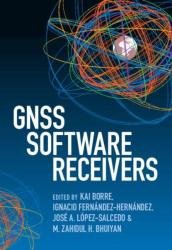GNSS Software Receivers
- Добавил: literator
- Дата: 4-11-2022, 03:50
- Комментариев: 0
 Название: GNSS Software Receivers
Название: GNSS Software ReceiversАвтор: Kai Borre, Ignacio Fernandez-Hernandez
Издательство: Cambridge University Press
Год: 2023
Страниц: 352
Язык: английский
Формат: pdf
Размер: 10.1 MB
Build and operate multi-GNSS and multi-frequency receivers with state-of-the-art techniques using this up-to-date, thorough, and easy-to-follow text. Covering both theory and practise, and complemented by MATLAB code and digital samples with which to test it, this package is a powerful learning tool for students, engineers, and researchers everywhere. Suggestions of hardware equipment allow you to get to work straight away and to create your own samples. Concisely but clearly explaining all the fundamental concepts in one place, this is also a perfect resource for readers seeking an introduction to the topic.
Software-defined radios (SDRs) brought an unprecedented degree of flexibility to the design of the receivers that support radio navigation. Previously, such design work had been the domain of a handful of hardware manufacturers whose schemes were implemented in hardware. This hardware provided a limited set of outputs and virtually no access to the internal states and data processing. SDRs allowed customization that simply was not possible using mass-produced receiver sets. Implementation specifics that were previously set in stone (or at least silicon) could now be easily tweaked or even changed wholesale. Kai Borre’s vision to implement an SDR in MATLAB made the receiver inner workings even more accessible. While nowhere near as practical as a commercial receiver, the code provided by Kai and collaborators was infinitely more interesting and useful as a scientific tool. The ability to easily test new acquisition schemes, different tracking loop designs and obtain wholly new outputs was placed in the hands of anyone who was interested.
Equal in importance was the educational opportunity that this tool provided. What better way to understand the signal structure, acquisition and tracking than to use the code to follow the signal processing through from reception to output? Countless scientists and engineers have used this code to better understand how the Global Navigation Satellite System (GNSS) works.
First, the GNSS civil community has evolved from one signal, GPS L1 C/A, the focus of our predecessor, to more than a dozen signals from four global constellations, and a similar yet increasing amount of regional systems, adding up to more than 100 satellites. This offers a wide variety of frequencies, signal modulations, coding schemes and message structures. In parallel, receivers have also become very diverse. Our intention is to provide an up-to-date reference that, compared to our predecessor, reflects at least part of this diversity. We focus on three aspects: multisystem (GPS, GLObalnaya NAvigatsionnaya Sputnikova Sistema [GLONASS], Galileo, BeiDou and NavIC), multifrequency (L1 and L5) and multiarchitecture (standard and snapshot).
Second, we have strengthened the link between the book and the MATLAB code provided with it. Most of the figures appearing in the book can be generated with the MATLAB code and available samples. The front end, acquisition, tracking and positioning parameters used are presented and justified. Readers can also change the configurations to obtain different results or record their own samples with very affordable hardware equipment that is also described in the book.
Finally, we hope that the practical orientation of the book makes it a good entry point for engineers and scientists who want to get acquainted with GNSS, but do not know where to start. Our focus is on receiver-specific aspects, and we have made an effort to explain the subtleties that make a GNSS receiver a complicated device in an intuitive way.
Скачать GNSS Software Receivers
Внимание
Уважаемый посетитель, Вы зашли на сайт как незарегистрированный пользователь.
Мы рекомендуем Вам зарегистрироваться либо войти на сайт под своим именем.
Уважаемый посетитель, Вы зашли на сайт как незарегистрированный пользователь.
Мы рекомендуем Вам зарегистрироваться либо войти на сайт под своим именем.
Информация
Посетители, находящиеся в группе Гости, не могут оставлять комментарии к данной публикации.
Посетители, находящиеся в группе Гости, не могут оставлять комментарии к данной публикации.
